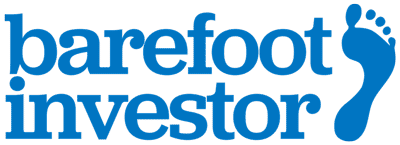Why Afterpay is the marijuana of credit
I think of Afterpay as the financial equivalent of marijuana.
Young people absolutely love it, and old people are doing a lot of finger-waving about the dangers of getting hooked on the newest financial drug to hit the streets.
This week the financial equivalent of a teacher, ASIC, busted into the school locker rooms (quick, hide the bongs!) and attempted to clear the air by holding its first review into the phenomenon that is ‘buy now pay later’, otherwise known as ‘young people’s layby’, otherwise known (by me) as ‘financial weed’.
Here’s some of what ASIC found:
The majority of Afterpay customers are millennials.
One in six of them are in financial strife … getting overdrawn, delaying bills, or borrowing more.
And these services are hot: the number of transactions has risen from 50,000 a month in April 2016 to 1.9 million in June 2018, with the collective tab now at a whopping $900 million plus.
Now, understand there’s nothing really revolutionary about Afterpay — men in grey suits have been dreaming up new ways to get people to spend money they don’t have since long before Bob Marley rolled his first spliff.
This is just the latest incarnation. (Case in point: when I was at uni the bank gave me a student banking package that bundled in a credit card with a $3,000 limit ‘just in case’, and effectively trained me to see their credit limit as my money. See? Same, same but different. Even the excuses are similar: “Oh, but if I pay off my credit card in the 55-day period, it’s free!”)
My opinion?
The actual terms on Afterpay are not that bad. As long as you pay off your instalments on time, you won’t be charged any interest or fees. So, as far as consumer credit drugs go, it’s not too heavy. Your financial life won’t be ruined by taking out a few Afterpay loans.
So chillax, right?
Well, no. See, the reason I compare Afterpay to weed is that it acts like a a gateway financial drug: it’s effectively training young people to rely on the bank’s money rather than banking on themselves.
Case in point: Afterpay claims their average purchase is $150.
A hundred and fifty clams!
Seriously, if you need instalments to cover $150, you need to check yourself before you wreck yourself.
And, once you get hooked on spending someone else’s money, there’s every chance you might graduate onto harder stuff — other millenial credit-drug dealers who really rip you off.
Who knows? Maybe in the future we’ll have before and after photos like they do with meth heads:
Before: This is a fresh faced Emma, aged 18, buying a pair of pink pumps on Afterpay.
After: This is a stressed out Emma, aged 23, buying scratchies with her Nimble loan.
Seriously, you’re never going to win if you don’t learn to stand on your own two feet and pay your own way.
And that’s why the ‘buy now, pay later’ phenomenon … is true to label.
Get hooked on this junk and you’ll pay a very high price later.
Tread Your Own Path!
